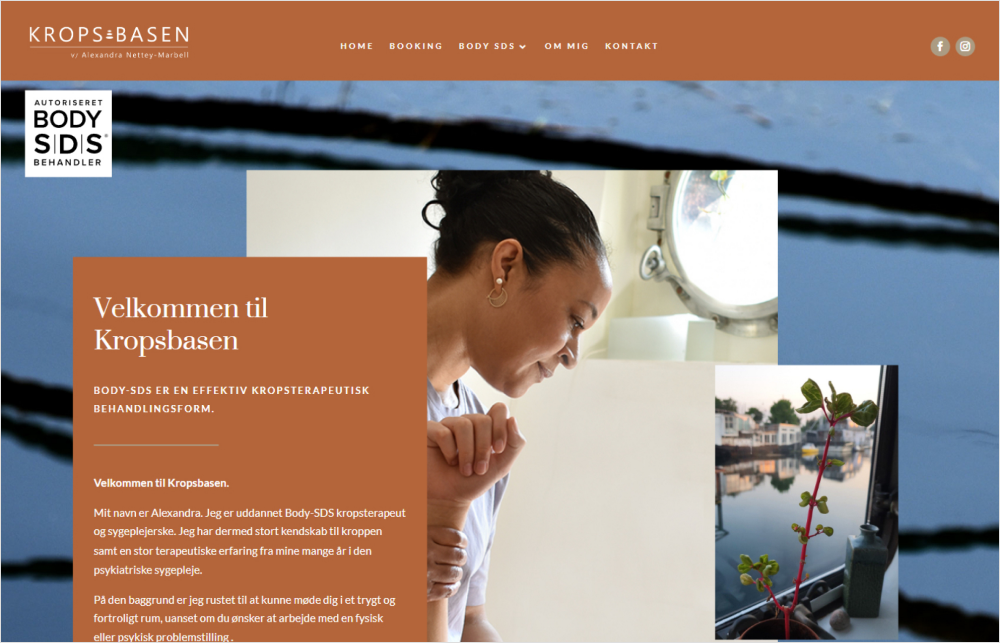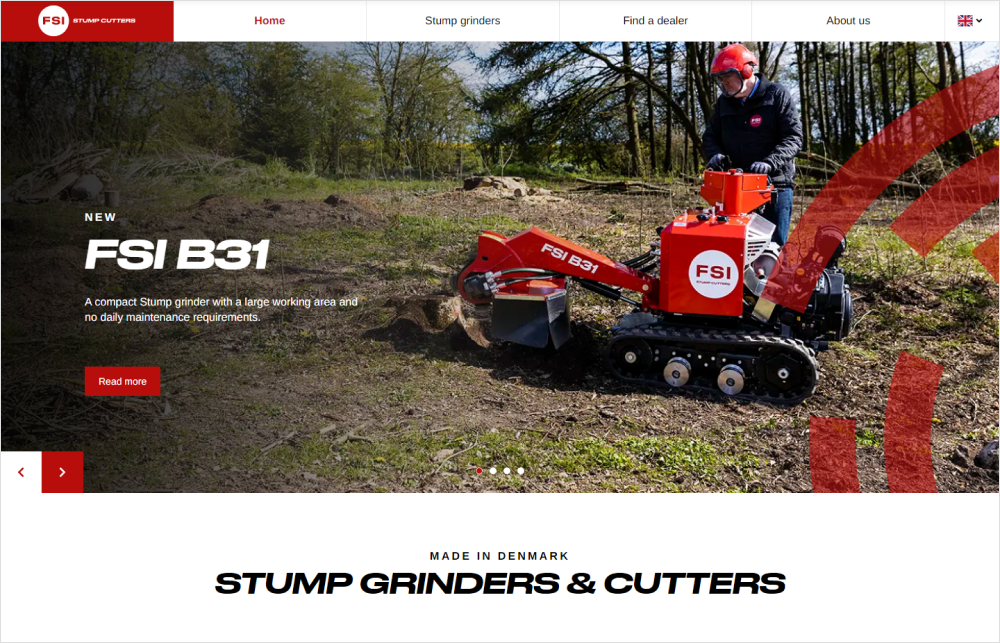Website theme or custom design – what is the difference?
A website theme is basically a finished “look and feel”, which gives you not only the design but also the “skin” which can be installed on a content management system (CMS) like WordPress or Umbraco and ecommerce systems like Magento.
The website theme is usually installed by a developer and then updated to match your company’s brand by uploading your logo, changing the color scheme, updating email configurations, etc. Note that not all themes can be used out-of-the-box without some updates/configurations, which are usually done by a developer or a tech-savvy marketing person.
On the other hand, a custom design is a unique design created by a designer that meets your brand requirements 100%. After the design is finished, a developer then takes over and implements the design on your chosen CMS or ecommerce system.
With a custom design, you can certainly get what you want; however, the cost is also higher and the setup time is longer because of the work involved.
What do companies normally do?
Most companies purchase a pre-made website theme and then customize it to meet their requirements, as explained above. It saves a lot of time and money, and at the end of the day, it’s difficult to distinguish the finished website or webshop from other custom-designed ones.
However, it’s also important to note that if you customize a theme too much, it can end up getting more expensive and time-consuming than if you designed from scratch in the first place.
The key is to establish your requirements early and determine if they can be covered by a website theme with minimal customizations or if it will be more cost-effective to do a custom design.
Below, we explain the key differences and similarities on the tasks that we do with theme-based and custom design projects at 1902 Software. Note that no two clients are the same, so the process and tasks described may still vary depending on each client's case. The actual tasks for the project will depend on the agreement between the client and the design/technical project manager.

General tasks for custom and template design
Regardless of whether you choose to go with a website theme or have a custom design created, these are the things that we normally do for your website or webshop project. As previously mentioned, the actual tasks still depend on your specific case and what is agreed between you and the technical and design project manager.
- Insert the company’s logo on the website or webshop as well as emails being sent out.
- Adjust canonical linking to prevent duplicate content.
- Add “no follow” links to search results.
- Configure:- Sending of transaction-based emails like invoices etc. (depends on the hosting setup)
- Payment gateway (this is often a separate module)
- Setup and configuration of shipping method
- Configuration of taxes, etc. - Add/change translation. Depending on the theme chosen and changes required, some strings may need to be translated.
- Configure Google Tag Manager and connect Google Analytics, Facebook, and other tracking scripts.
Optional tasks - choose what you need
- Add product categories.
- Import existing products from: an existing webshop, Excel sheet, or database.
- Import existing images for each product and/or adjust images provided by the manufacturer to new layout.
- Crop and adjust product images.
- Import existing clients from the previous webshop, an Excel sheet, or database.
- Import existing orders from previous webshop system. (While we can do this, we often advise clients not to spend money on it because it can be complicated and therefore expensive to do.)
- Speed optimization. This includes:
- Optimization of non-product images
- Minification of JavaScript and CSS
- Setup and configuration of cache
- Other optimizations based on Google Page Speed Insights and webpagetest.org. (Note that we cannot tell ahead of time what must be optimized)
- Configuration of caching service like Varnish, Redis, Memcache etc.
- Installation of customized search engine like Sphinx, Elasticsearch, clerk.io, Add Wish
- Product recommendation functionality like Criteo, clerk.io, Add Wish
- Newsletter setup and configuration, e.g., MailChimp

Which should you choose?
It is difficult to decide what is the best option between a website theme and a custom design because both approaches have their own benefits and drawbacks.
Unless you are a big company with an established online presence that requires a unique design to make sure that the website/webshop is aligned with the brand, it’s often difficult to justify the extra expense of having a custom design.
Consider that once a website theme has your logo and the colors are changed, you are practically looking at a “unique” design. What makes the website/webshop interesting and stand out from competitors is the content, pictures, special features, service functionality, recommendation functionality, page speed etc. rather than if a search box is placed five pixels to the left or the right.
Whatever you choose for your project, we can support you all the way including handling all the post-project maintenance.
Template-based development
Marketplaces selling website themes
For website theme-based development, clients typically choose the theme that they want to purchase and use on their website or webshop. However, our design department can also help in finding a theme that best fits the client's requirements. There are plenty of online marketplaces that offer customizable themes. Here are some that you can check out: Magento WordPress UmbracoWhat 1902 Software offers
For website or webshop projects that are theme-based, here are the things that we typically do (of course, you can ask us to do any modification to the theme as well as backend/website plugin development and installation, integrations, etc.) Unless otherwise agreed we always do the following:- Install the website theme
- Update the color scheme of the theme to your company’s brand
- Remove unused/unwanted parts of the theme. It’s normal for clients to not use all the out-of-the-box features of a theme, so we review with you what can be removed to reduce the page size and complexity.
- Set up and configure automated emails (i.e., the mails being sent out by the system, especially with webshops that have several emails that must be configured).

Custom design and development
For development projects that require a custom website or webshop design from our design department, the process is a bit different.
Design
- We start by reviewing your requirements and drawing up the website/webshop using wireframes. During this process, we determine where the different “main elements” will be located on the major pages.
- Once the wireframes have been finished, we begin the actual design process. We usually start out with the main page. Aside from choosing the right colors with brand considerations, we also draw up the homepage using the wireframes as a guide in the different resolutions agreed with the client.
- Typically, we have one resolution for desktop, one for tablet portrait view, one for tablet landscape view, and of course, another for responsive mobile view. Each of these “views” require a separate design to ensure that all elements are considered and properly placed within the page.
- When the homepage has been designed and everyone is in agreement, we then go on to design the sub-pages such as product pages, product listings for ecommerce sites and normal content sub-pages for websites.
For custom design projects, we have in-house “standards” that we implement by default—these are certain UI/UX principles or practices that we’ve gathered from past projects or trainings in UX design. We also apply these principles to theme-based websites or webshops as much as we can, while keeping in mind that making too many changes to a theme defeats the purpose of starting out with a pre-made theme in the first place; it is a balancing act.
Development
When the design has been completed, it’s taken over by a technical project manager and a development team whose job is to implement the design on the website or webshop. They do this in close collaboration with the design department. On big and complicated websites and webshops, the technical project manager is also involved with the design process to ensure that the design can be technically implemented.
Once the development has been completed, we enter all the content or import all the products depending on what has been agreed with the client.